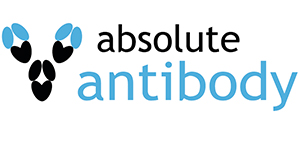Anti-Podoplanin (MAP tag) (PMab-1)
Anti-Podoplanin (MAP tag) [PMab-1], Recombinant, IgG kappa, Goat
SKU
ABAAb00875-24.2
Packaging Unit
100 μg
Manufacturer
Absolute Antibody
Availability:
loading...
Price is loading...
CloneID: PMab-1
Antigen Long Description: This antibody was raised by immunising rats with 14-residue synthetic peptide mpp3851, which corresponds to amino acids 38-51 (GDGMVPPGIEDKIT) of the platelet-aggregation-stimulating (PLAG) domain of mouse podoplanin. Spleen cells were then harvested, and fused to P3U1 cells to generate stable hybridomas.
Buffer Composition: PBS with 0.02% Proclin 300.
Chimeric Use Statement: This chimeric goat antibody was made using the variable domain sequences of the original rat IgG2a format, for improved compatibility with existing reagents, assays and techniques.
Available Custom Conjugation Options: AP, HRP, Fluorescein, APC, PE, Biotin Type A, Biotin Type B, Streptavidin, FluoroProbes 647H, Atto488, APC/Cy7, PE/Cy7
Uniprot Accession No.: Q62011
Specificity Statement: This antibody is specific for amino acids 38-51 (GDGMVPPGIEDKIT) of the platelet-aggregation-stimulating (PLAG) domain of mouse podoplanin (PDPN). This antibody, therefore, possesses high affinity and specificity for the MAP epitope tag (GDGMVPPGIEDK), which is derived from the PLAG domain of murine podoplanin. PDPN is a type I transmembrane protein that interacts with the platelet receptor C-type lectin-like receptor-2 (CLEC-2). PDPN is expressed by a wide variety of cells, including podocytes, lymphatic endothelial cells and type I alveolar cells. PDPN is also upregulated on certain cancer cells, where it mediates tumour-induced platelet aggregation by binding to CLEC-2 on platelets. Chihara (2018) associated Podoplanin with a co-inhibitory receptor in T-cell activation along with PD-1, TIM-3, LAG-3 and TIGIT.
Application Notes (Clone): This antibody binds to the PLAG domain of murine PDPN and is, therefore, able to block its interaction with C-type lectin-like receptor-2 (CLEC-2) (Yamada, 2017). This has a number of potential therapeutic applications, including the suppression of lymphangiogenesis and inflammatory macrophage infiltration at the site of wound healing in mouse corneal suture and ear section models (Maruyama et al, 2014), as well as suppression of transplant rejection. This antibody possesses high affinity and specificity for the MAP epitope tag (GDGMVPPGIEDK), and can, therefore, be used to detect and purify tagged proteins in a range of assay formats (Fujii et al, 2016). PMab-1 performs well in immunohistochemical analysis, and has been used to stain the mouse melanoma B16-F10 and mouse podoplanin-expressing CHO transfectants (Kaji et al, 2012). The use of this antibody in immunostaining of somatic tissues, including mouse lung lymphatic vessels, kidney glomeruli, pulmonary alveoli, pulmonary pleura and salivary gland myoepithelial cells, has been successfully performed on both paraffin-embedded sections and frozen sections (Kaji et al, 2012). The specificity of this antibody has been confirmed in Western blot analysis (Kaji et al, 2012), while Western blot analysis has also revealed that activation of LPS-induced inflammatory pathways, including the MAPK and NF-κB pathways, is affected by PMab-1 (Maruyama et al, 2014). The mouse–rat chimeric antibody mPMab-1 is derived from PMab-1 (Yamada et al, 2017).
Antigen Long Description: This antibody was raised by immunising rats with 14-residue synthetic peptide mpp3851, which corresponds to amino acids 38-51 (GDGMVPPGIEDKIT) of the platelet-aggregation-stimulating (PLAG) domain of mouse podoplanin. Spleen cells were then harvested, and fused to P3U1 cells to generate stable hybridomas.
Buffer Composition: PBS with 0.02% Proclin 300.
Chimeric Use Statement: This chimeric goat antibody was made using the variable domain sequences of the original rat IgG2a format, for improved compatibility with existing reagents, assays and techniques.
Available Custom Conjugation Options: AP, HRP, Fluorescein, APC, PE, Biotin Type A, Biotin Type B, Streptavidin, FluoroProbes 647H, Atto488, APC/Cy7, PE/Cy7
Uniprot Accession No.: Q62011
Specificity Statement: This antibody is specific for amino acids 38-51 (GDGMVPPGIEDKIT) of the platelet-aggregation-stimulating (PLAG) domain of mouse podoplanin (PDPN). This antibody, therefore, possesses high affinity and specificity for the MAP epitope tag (GDGMVPPGIEDK), which is derived from the PLAG domain of murine podoplanin. PDPN is a type I transmembrane protein that interacts with the platelet receptor C-type lectin-like receptor-2 (CLEC-2). PDPN is expressed by a wide variety of cells, including podocytes, lymphatic endothelial cells and type I alveolar cells. PDPN is also upregulated on certain cancer cells, where it mediates tumour-induced platelet aggregation by binding to CLEC-2 on platelets. Chihara (2018) associated Podoplanin with a co-inhibitory receptor in T-cell activation along with PD-1, TIM-3, LAG-3 and TIGIT.
Application Notes (Clone): This antibody binds to the PLAG domain of murine PDPN and is, therefore, able to block its interaction with C-type lectin-like receptor-2 (CLEC-2) (Yamada, 2017). This has a number of potential therapeutic applications, including the suppression of lymphangiogenesis and inflammatory macrophage infiltration at the site of wound healing in mouse corneal suture and ear section models (Maruyama et al, 2014), as well as suppression of transplant rejection. This antibody possesses high affinity and specificity for the MAP epitope tag (GDGMVPPGIEDK), and can, therefore, be used to detect and purify tagged proteins in a range of assay formats (Fujii et al, 2016). PMab-1 performs well in immunohistochemical analysis, and has been used to stain the mouse melanoma B16-F10 and mouse podoplanin-expressing CHO transfectants (Kaji et al, 2012). The use of this antibody in immunostaining of somatic tissues, including mouse lung lymphatic vessels, kidney glomeruli, pulmonary alveoli, pulmonary pleura and salivary gland myoepithelial cells, has been successfully performed on both paraffin-embedded sections and frozen sections (Kaji et al, 2012). The specificity of this antibody has been confirmed in Western blot analysis (Kaji et al, 2012), while Western blot analysis has also revealed that activation of LPS-induced inflammatory pathways, including the MAPK and NF-κB pathways, is affected by PMab-1 (Maruyama et al, 2014). The mouse–rat chimeric antibody mPMab-1 is derived from PMab-1 (Yamada et al, 2017).
| SKU | ABAAb00875-24.2 |
|---|---|
| Manufacturer | Absolute Antibody |
| Manufacturer SKU | Ab00875-24.2 |
| Package Unit | 100 μg |
| Quantity Unit | STK |
| Reactivity | Mouse (Murine) |
| Clonality | Recombinant |
| Application | Western Blotting, ELISA, Flow Cytometry, Immunohistochemistry, Blocking, Fluorescence-Activated Cell Sorting (FACS) |
| Isotype | IgG kappa |
| Host | Goat |
| Product information (PDF) | Download |
| MSDS (PDF) | Download |

 Deutsch
Deutsch







